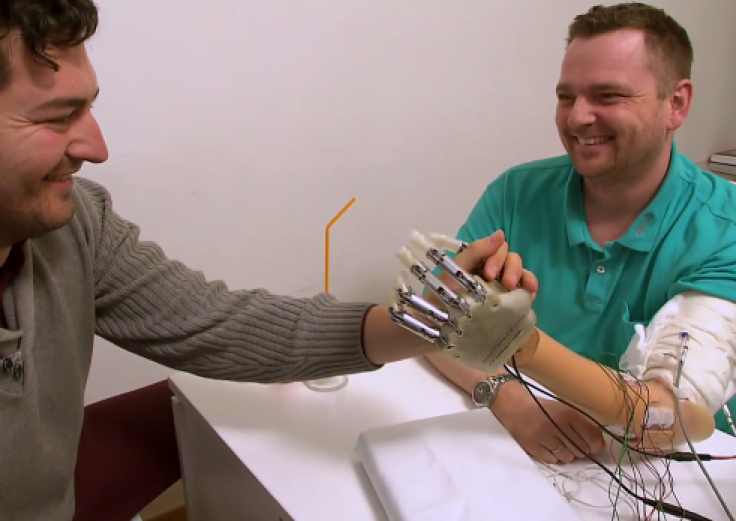Bionic Hand Lets Amputee Feel The World In Real-Time After Nine Years [VIDEO]

A series of groundbreaking developments in prosthetic technology have culminated in the successful trial of the world’s first sensory-enhanced artificial limb — a “bionic hand” that allows the user to feel objects in real-time.
Dennis Aabo Sørensen,a 36-year-old amputee and recent pilot user of the innovation, told reporters that the technology offers an unprecedented level of precision that comes close to the natural sensation of touch. “The sensory feedback was incredible,” said Sørensen, who lost his left hand while handling fireworks back in 1995. “I could feel things that I hadn’t been able to feel in over nine years. When I held an object, I could feel if it was soft or hard, round or square.”
The bionic hand, which was developed by researchers at EPFL in Switzerland and SSSA in Italy, processes real-time sensory information by measuring tension in the artificial tendons that control finger movements, allowing the user’s brain to interpret tactile information. These signals travel through four electrodes that are implanted and connected to the upper arm nerves. Although the developers were initially worried that Sørensen’s nerves had lost their edge over nine years of inactivity, the first trial was a success.
“This is the first time in neuroprosthetics that sensory feedback has been restored and used by an amputee in real-time to control an artificial limb,” Dr. Silvestro Micera, director of the Translational Neural Engineering Laboratory at EPFL and lead developer of the technology, said in a press release.
The next step is to fine-tune the tremendously complex processes whereby the innovation “translates” sensory input to information that can be picked up by nerves and understood by the brain. As the technology has yet to make its way through all the necessary safety trials, Sørensen’s bionic hand was removed after the experiment, making the restoration of touch a temporary joy.
“I was more than happy to volunteer for the clinical trial, not only for myself, but to help other amputees as well,” says Sørensen, who must now content himself with his old prosthesis until the new one can be approved for public use.



























